PODCAST The story of the Lenape, the native people of New York Harbor region, and their experiences with the first European arrivals — the explorers, the fur traders, the residents of New Amsterdam.
Before New York, before New Amsterdam — there was Lenapehoking, the land of the Lenape, the original inhabitants of the places we call Manhattan, Westchester, northern New Jersey and western Long Island.
This is the story of their first contact with European explorers and settlers and their gradual banishment from their ancestral land.
Fur trading changed the lifestyles of the Lenape well before any permanent European settlers stepped foot in this region. Early explorers had a series of mostly positive experiences with early native people.
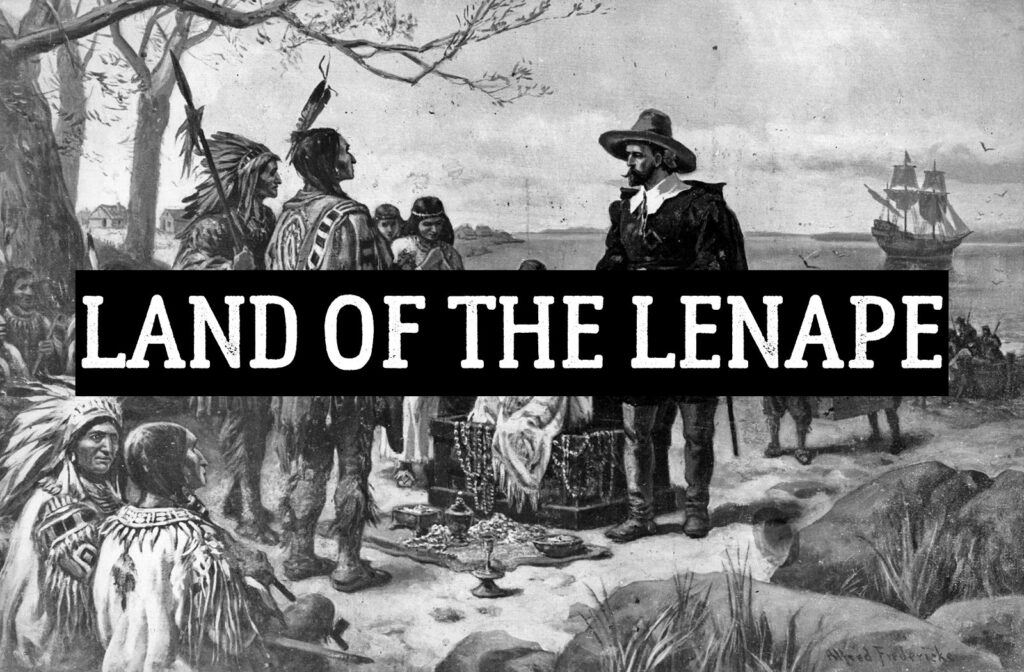
With the Dutch settlement of New Amsterdam, the Lenape entered into various land deals, “selling: the land of Manhattan at a location in the area of today’s Inwood Hill Park.
But relations between New Amsterdam and the surrounding native population worsened with the arrival of Director-General William Kieft, leading to bloody attacks and vicious reprisals, killing hundreds of Lenape and colonists alike.
Peter Stuyvesant arrives to salvage the situation, but further attacks threatened any treaties of peace. But the time of English occupation, the Lenape were decimated and without their land.
And yet, descendants of the Lenape live on today in various parts of the United States and Canada. All that and more in this tragic but important tale of New York City history.
To get this week’s episode, simply download it for FREE from iTunes or other podcasting services or get it straight from our satellite site.
Or listen to it straight from here:
__________________________________________________________
The Bowery Boys: New York City History podcast is brought to you …. by you!
We are now producing a new Bowery Boys podcast every two weeks. We’re also looking to improve the show in other ways and expand in other ways as well — through publishing, social media, live events and other forms of media. But we can only do this with your help!
We are now a member of Patreon, a patronage platform where you can support your favorite content creators for as little as a $1 a month.
Please visit our page on Patreon and watch a short video of us recording the show and talking about our expansion plans.
If you’d like to help out, there are five different pledge levels (and with clever names too — Mannahatta, New Amsterdam, Five Points, Gilded Age, Jazz Age and Empire State). Check them out and consider being a sponsor.
We greatly appreciate our listeners and readers and thank you for joining us on this journey so far. And the best is yet to come!
__________________________________________________________
The long road of the Lenape. This 1978 map shows the path of their various relocations across the country in comparison with the relocation path of the Cherokee.
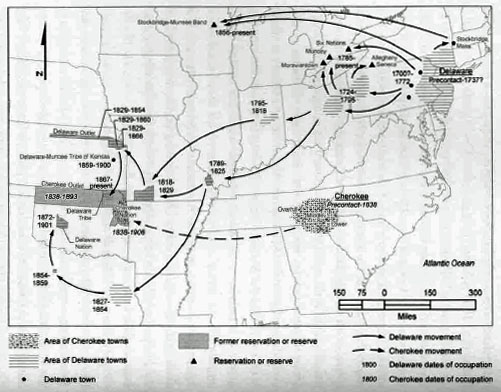
Henry Hudson’s interaction with the native people of the area would much later inspire a host of fanciful depictions.
From a 1909 postcard for the Hudson-Fulton Celebration
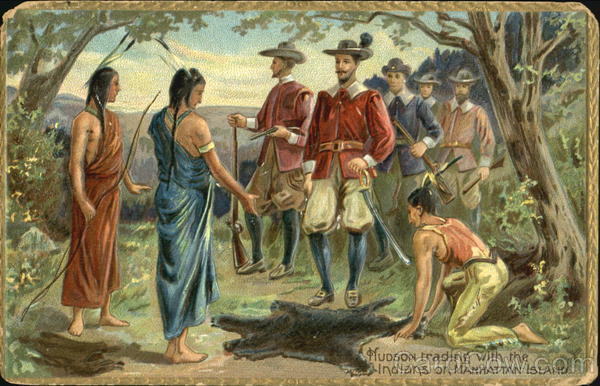
From an old textbook:
“‘Designed and etched for Bancroft’s History of the United States’ Written on image: ‘Sept. 7 1609’
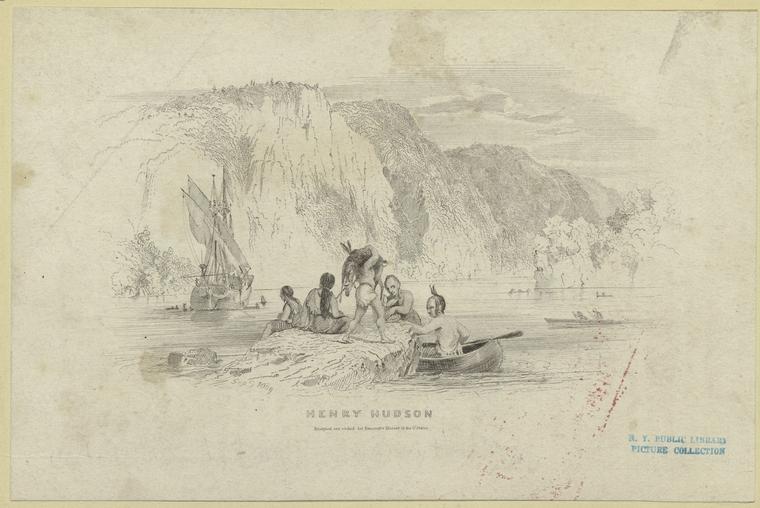
From a 1915 textbook ‘A First Book In American History’ — “Hudson’s ship anchored again opposite the Catskill Mountains, and here he found some very friendly Indians, who brought corn, pumpkins, and to-bacco to sell to the crew. Still farther up the river Hudson visited a tribe onshore, and wondered at their great heaps of corn and beans. The chief lived in around bark house. Captain Hudson wasmade to sit on a mat and eat from a red wooden bowl. The Indians wished him to stay all night; they broke their arrows and threw them into the fire, to show their friendliness.
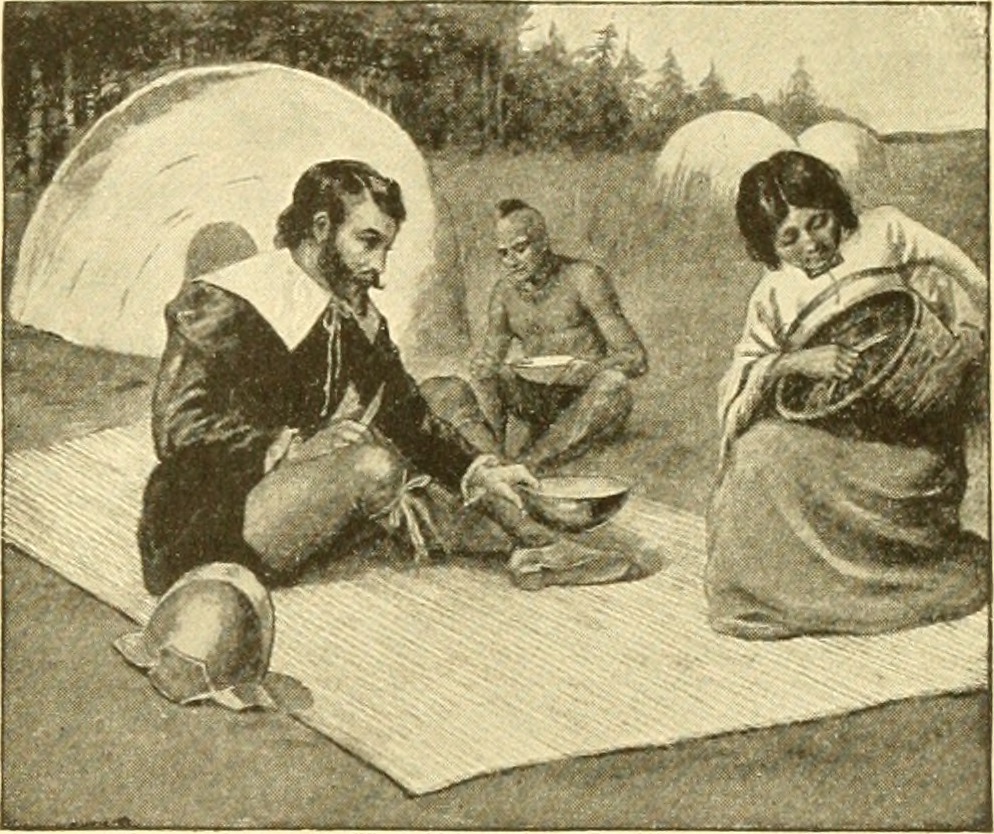
Behold New Amsterdam!
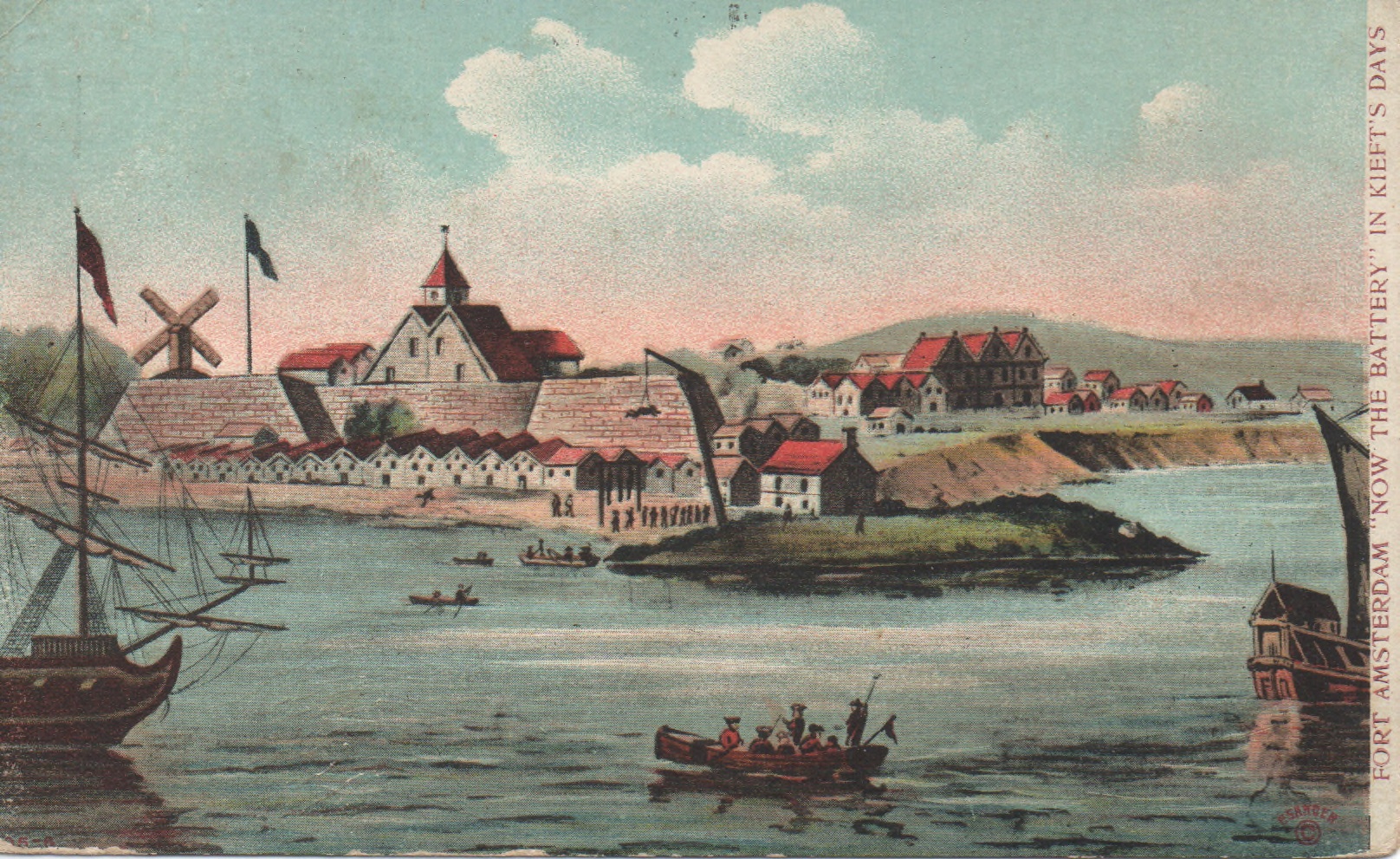
From another text book, this one from 1881:
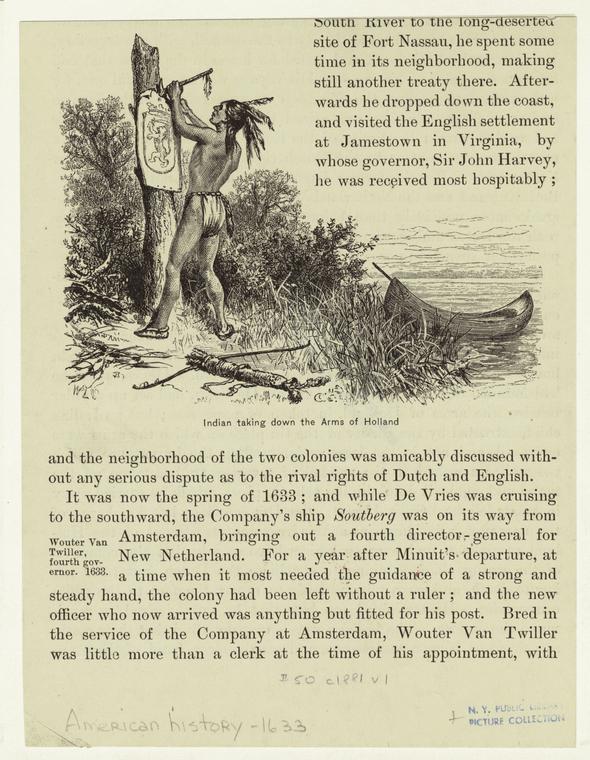
From an 1876 print: ‘Treaty with the Indians at Fort Amsterdam.” Not sure what year this picture depicts but everybody has two legs, so no Peter Stuyvesant!
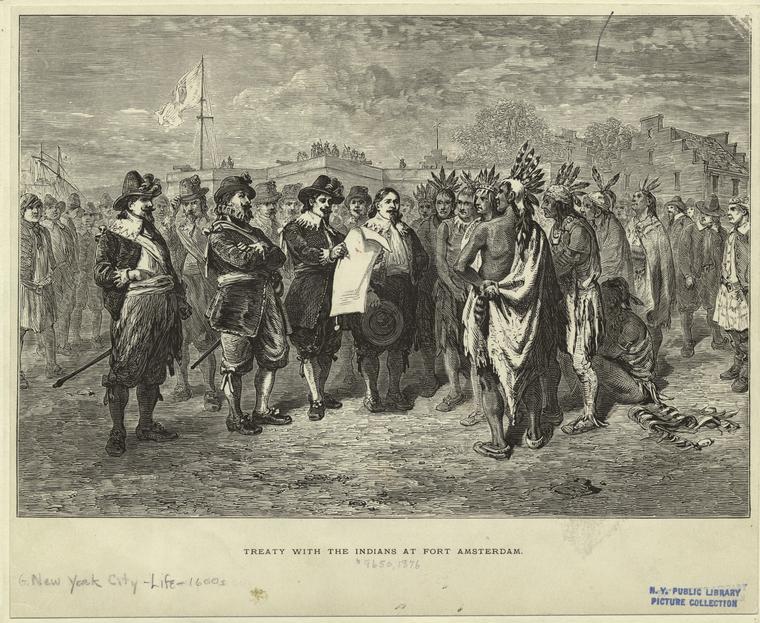
A well-known engraving by Aldert Meijer depicts New Amsterdam as being touched by the hand of providence.
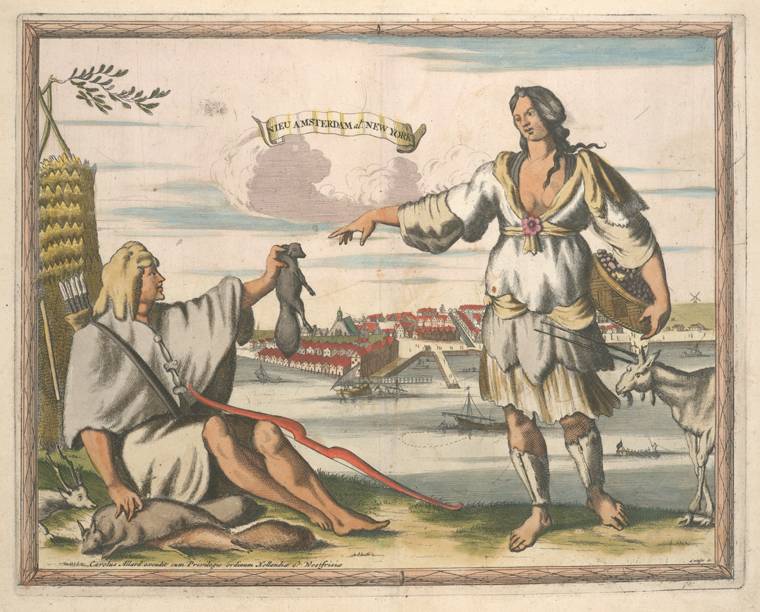
A drawing of the 1926 purchase of Manhattan between the native population and Peter Minuit. Image is from Popular Science Magazine, 1909.
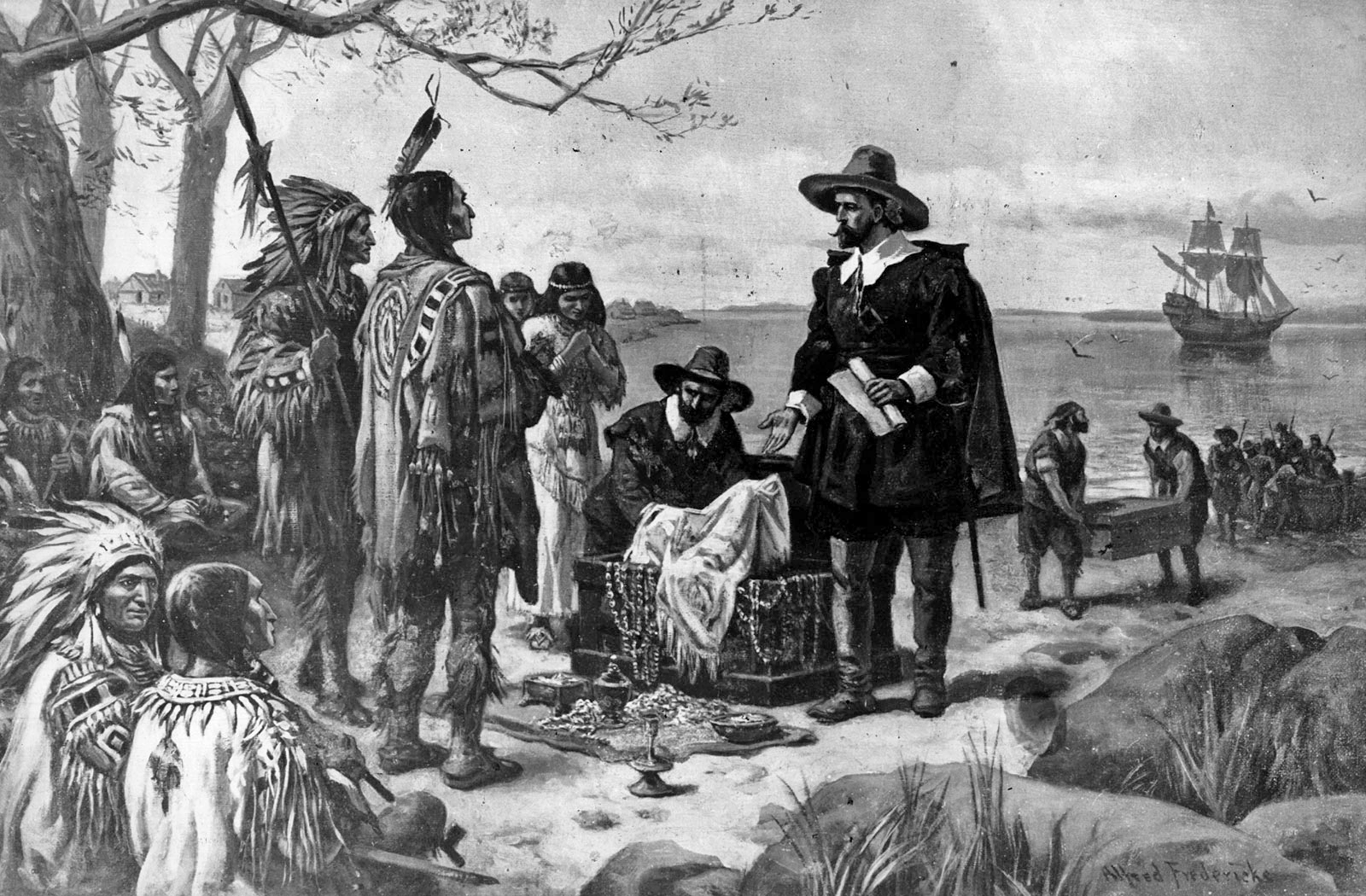
…clearly derived from
“Peter Minuit and the Swedes purchasing lands of the Indians.” Illustration dated 1890
William Kieft’s reputation as a vicious tyrant is made apparent here in this 1897 illustration captioned ‘Kieft’s Mode of Punishment.’
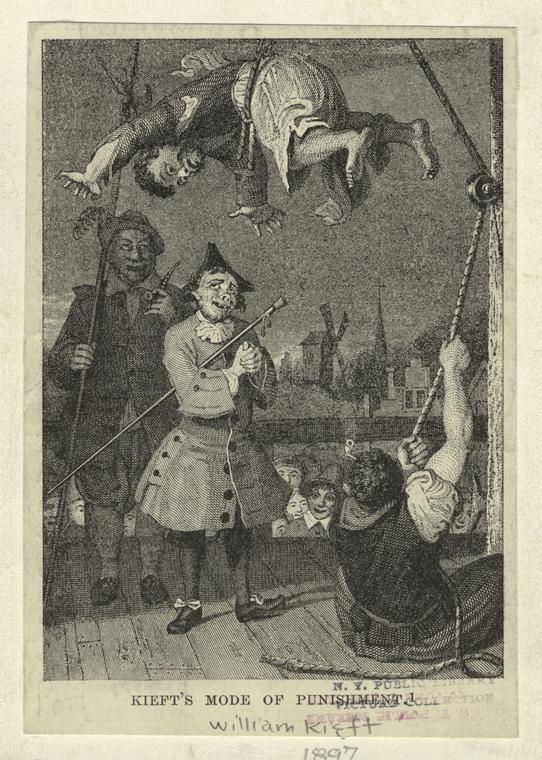
From the Delaware Indians website: “A painting by Lenape artist Jacob Parks (1890-1949), which depicts a Lenape family leaving their home on their reservation in Kansas in 1867. This area had been their home for over thirty-five years, and now the government told them they had to move to Indian Territory (now Oklahoma).”
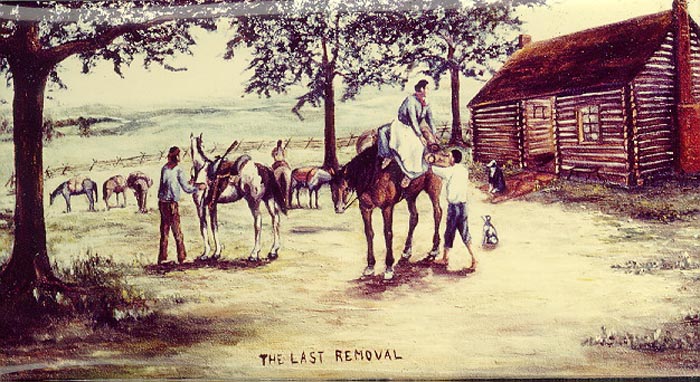
The Smithsonian National Museum of the American Indian is currently living in the Alexander Hamilton U.S. Custom House. It’s a FREE museum so you should stop in anytime you’re in the Battery Park area.
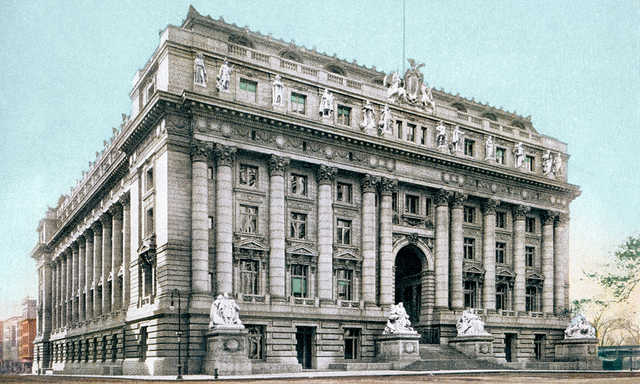
FURTHER READING
The First Manhattans: A History of the Indians of Greater New York by Robert S. Grumet
The Island At The Center Of The World by Russell Shorto
The Delaware Indians: A History by  C.A. Westanger
Native New Yorkers: The Legacy of the Algonquin People of New York by Evan T. Pritchard
The Official Site of the Delaware Tribe of Indians
Lenape Lifeways: An overview of Lenape life and customs
Removal History of the Delaware Tribe
FURTHER LISTENING
After you’ve listened to this show on the history of the Lenape, check out other shows related to this episode:

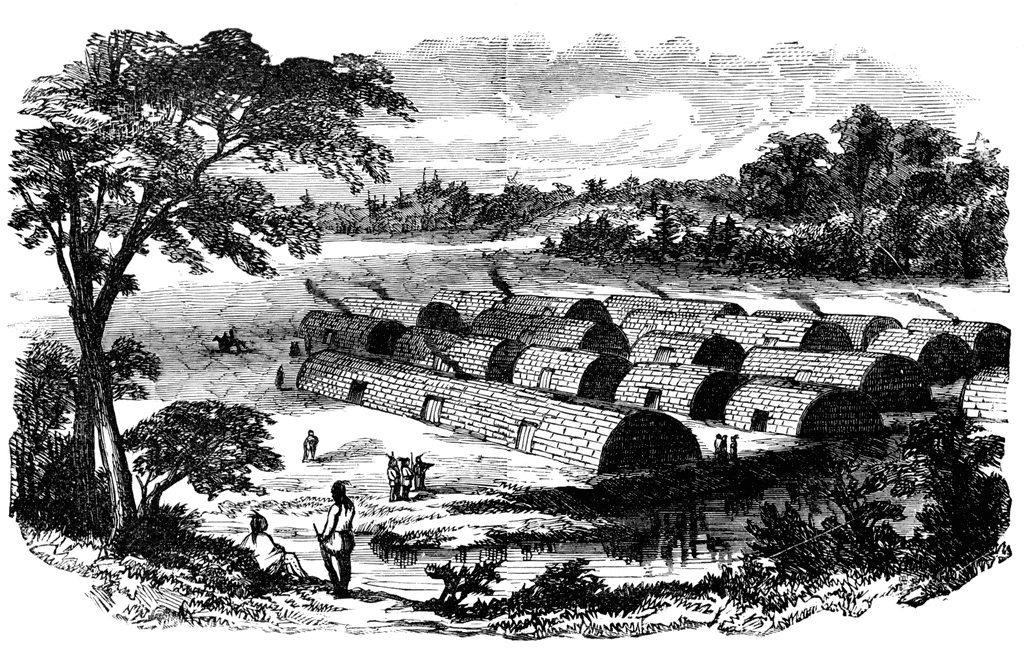
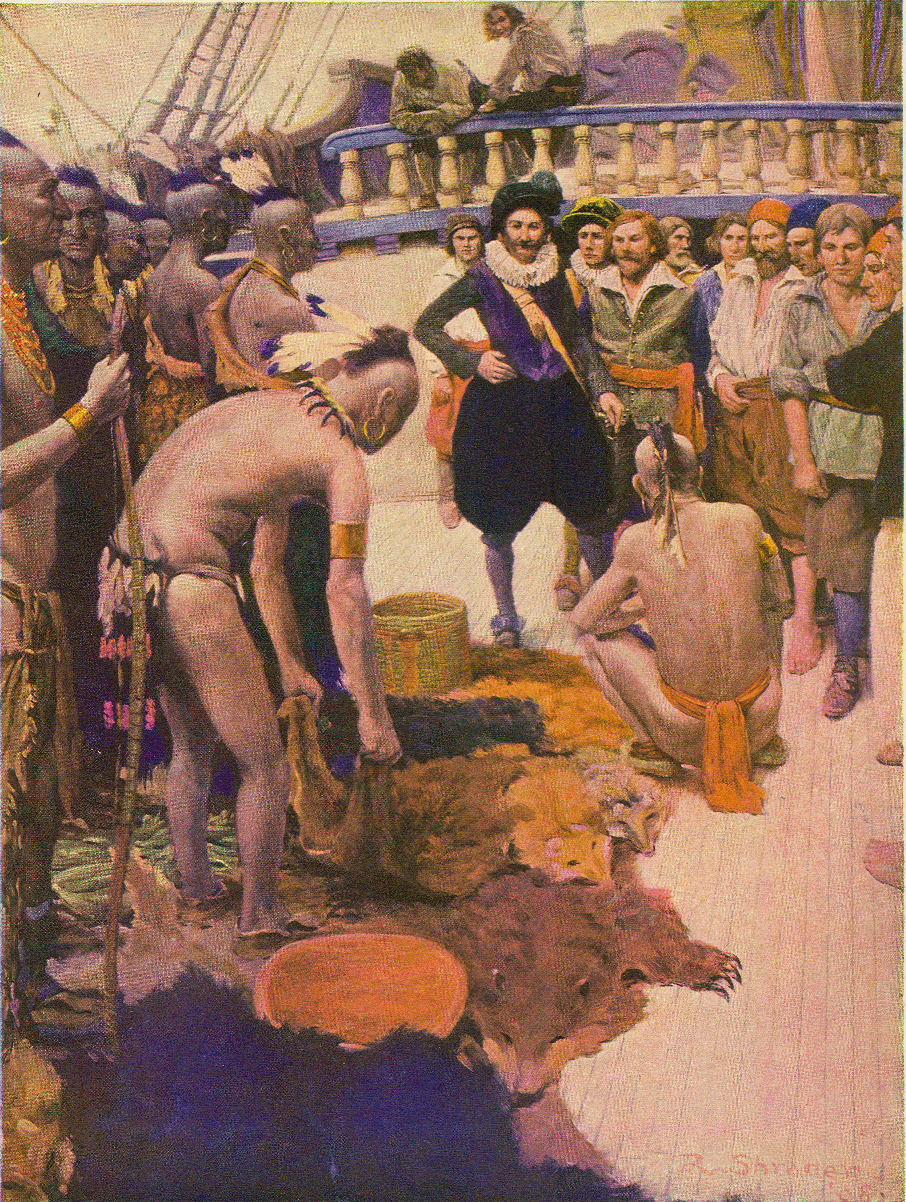
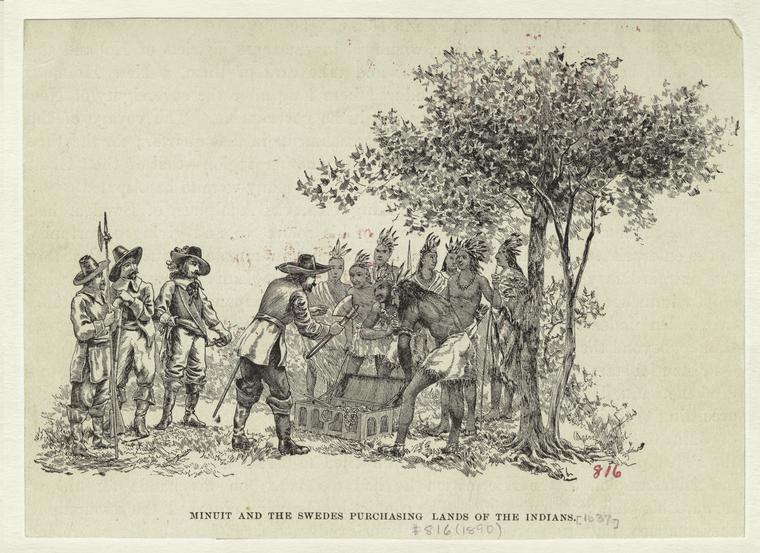
8 replies on “Land of the Lenape: A Violent Tale of Conquest and Betrayal”
My 14-15 Great Grandfather came with the first 6 men in 1624 to check out the area for trading. He returned with his family in 1630. I think the mayor should offer me a small free apartment—in the West Village. Love the photo’s.
It is important to be proud of your history, and NYC would exist as it does today without this colonialization, but it does say something that the first remark here on an article called “The Tragic Tale of the Lenape” is a joke about the not profiting enough from this tragedy on stolen land.
Dear B.B. –
Love your podcasts. My wife – the tech of the family – turned me on to them a few years back (being the student of history I am and with both of us being from NYC – me > Bay Ridge, Brooklyn, her > Greenwich Village, Manhattan).
That said, I’ve been covering Native American history/culture for 30 years – first from the East coast, now from S.D. (since ’99). Just a heads-up on a poor choice of words in your apology on the Lenape story – “butchering” the pronunciation of the word Wickquasgeck (for those in a culture that were, literally, “butchered” – many out of existence…you may as well have said “scalped”).
It might seem like a minor point to some, but is easily akin to the mindset re: “redskins” which, as I’m sure you’re aware isn’t viewed as a throwaway term or an honoring of this nation’s first people by Native Americans.
I’m not sure how many tribal members listen to your podcast, but that’s really not the point. The point is educating the public – which you do generally accomplish and very well.
Thanks for the excellent work you offer in telling the story of my hometown.
Best – Jim Kent
Jim Kent
SD Public Radio, National Public Radio, National Native News,
Lakota Country Times, Teton Times, Rapid City Journal,
Nebraska Public Radio, Voice Of America Radio,
A.A.R.P. Radio, Free Speech Radio News
Thanks for your note Kent. That was unintentional wording obviously and was easily changed. Thanks for catching that. – G
Dear Greg & Tom
I’m a photographer and your podcasts are the highlight of my day while I’m in the office working. I’m addicted to The Bowery Boys.
I loved the episode on the Lenape Indians. My 9th great grandfather was Dominie Everardus Bogardus who did not get along with Kieft and was ordered to to return to Amsterdam with William Kieft to present the issues. He died with Kieft in a shipwreck aboard Princess Amelia, 1647
Hi Kathleen, thanks for leaving a note. What a fascinating lineage! I’ve read many stories about Bogardus perusing through old documents….
Hello! I’m a descendant of the Lenape, who chose to stay in Kansas. My ancestors had to give up their tribal “membership”, and become American citizens, in order to stay in Kansas. A few hundred of them stayed in Kansas, while the rest went to Oklahoma.
Thank you for this podcast. I love learning more about my ancestors, and their history.
Deanna Hubbard
Thank you for creating this podcast and listing all these documents. As a Lenape (Delaware Tribe of Indians) it brings me great pride to hear my heritage getting recognized. Having lived in Manahatta (Inwood Hill) and Brooklyn I always got a kick out of explaining to New Yorkers who my ancestors are.
Wampum- more than currency as it was often presented in ceremonies. Creation of wampum from traditional native hand tools is very time consuming, so when Europeans began mass producing of wampum upset traditional trade.
Did you work with any Lenape in the production of this podcast? Should you ever wish to work with Lenape in creating future presentations I would recommend you reach out to the Lenape Center NYC.